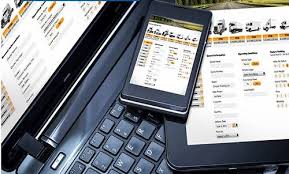Those in the technology industry are likely to be familiar with testing. This entails designing, producing, and repeatedly testing a product or piece of software until it is perfect. For your product to be as wonderful as you want it to be, it is crucial to include it in the product development cycle. In recent years, testing has grown in complexity and refinement. In order to reduce the workload on the remaining team members and provide precise and comprehensible findings, we have begun using computer testing. Here, we’ll go over automation testing in further detail, including the example, tools, and types.
Automation Testing
Automation testing is a method of software testing in which a set of predefined test cases is run by specialized automated testing software. Manual testing, on the other hand, is carried out by a human sitting in front of a computer, diligently carrying out the test processes.
The automation testing program can also input test outcomes into the system under test, evaluate expected and actual results, and generate detailed test reports. Software test automation requires significant financial and resource commitments.
The same test suite will have to be run multiple times during different development processes. With a test automation tool, you can record this test set and play it back whenever you need to. Once the test suite is automatic, there is no need for a person to be involved. This made test automation’s ROI better. Automation does not aim to completely replace manual testing; rather, it aims to reduce the number of test cases that must be executed manually.
Automation Testing Example
An example of automation testing includes so many different kinds of testing (hardware, software, network, security, performance, and compatibility) that can all be done automatically or by hand, depending on the situation. But I figured describing some various examples could be helpful.
#1. Hardware Testing
Automated testing of hardware systems has been around for a long time. “Test harnesses” have been used in industrial systems pretty much since the start of the systems engineering business. After all, if you are making a mechanical system with a lot of different circuits, boards, and parts, you need a way to test each part separately. In a way that is similar to unit testing software, you build an electronic rig that imitates the device being tested’s inputs and measures its outputs. It can send a lot of different signals, measure how they work, and compare the results. This is much simpler than personally testing them and writing down the output voltages.
For testing the entire device, you may employ a large-scale test rig to imitate real-world usage by placing a vehicle or machine in a test environment. This is ideal for testing automobiles or safety systems that require a test driver, closed track, power station, etc. Automated lab testing saves money and increases quality.
#2. Software Testing
This example of automation testing is very similar when testing software systems; first, you must isolate specific functions (unit test), then test entire modules (functional test), then test entire systems (end-to-end system test), and finally test all external interfaces (API testing and/or UI test). In our whitepaper on testing methodologies, this is covered in greater detail.
#3. Compatibility Testing
Compatibility testing rounds out automated testing. Cross-browser testing in software testing ensures that the same web page or application works on different browsers. You may also have to test the same application on multiple mobile devices (iOS, Android) or hardware systems on different voltages (230V for Europe, 115V for North America), USB versions, etc. Compatibility testing is complicated and expensive because you have to maintain so many devices. Simulators that replicate devices, browsers, and operating systems can automate this testing. Hardware is harder, although emulators and test labs can simulate varied conditions.
Automation Testing Tools
For any testing automation project to be successful, the right tools are necessary. With so many open-source and paid automation testing tools to choose from, it can be hard to choose the right automation testing tool. Here is a list of popular automation testing tools.
#1. Avo Assure
Avo Assure is included among the no-code intelligent automation testing tools. It supports more than 200 technologies and enables you to test intricate, entire company procedures on a variety of platforms, including the web, mobile devices, desktop computers, mainframes, SAP, Oracle, and Salesforce.
Features:
- A pre-built library containing over 1500 terms.
- Certified for Oracle Cloud Infrastructure, SAP S/4HANA, and SAP NetWeaver.
- integrates with various CI/CD and SDLC systems, such as Jira, Atlassian Bamboo, Sauce Labs, TFS, and Q-test.
- It is possible to run tests concurrently and after usual business hours by using intelligent scheduling.
- Advanced dashboards and execution metrics allow for intuitive report analysis.
- Accessibility testing in accordance with WCAG, Section 508, and ARIA.
#2. TestRigor
With the help of the no-code application TestRigor, human quality assurance testers may create complex automated tests with just a few commands in English. For mobile web browsers, APIs, native and hybrid mobile applications, and online UIs, end-to-end tests may be readily generated.
Features:
- Create tests 15 times faster than Selenium.
- Reduce the maintenance of tests by up to 99.5%.
- Every team member will be able to understand tests and instructions written in no code.
- Test case management and CI/CD integrations.
- Email & SMS testing.
- Web, mobile, and API testing in a single test. Cross-platform and browser compatibility.
- Perform 1,000 tests and receive results in less than 30 minutes.
#3. TestComplete
For testing desktop, web, and mobile apps, both technical and non-technical users can utilize the graphical user interface (GUI) test automation tool called TestComplete.
Features:
- Use record and playback or script in your preferred modern languages, such as JavaScript, Python, or VBScript, to create code or codeless tests.
- ML and AI-based superior object recognition Support for testing corporate apps like SAP, Oracle EBS, and Salesforce
- Run functional UI tests concurrently for continuous testing and delivery on your local workstation or in the cloud.
- It provides you with a full testing lifecycle by tightly integrating with the tools in your ecosystem, such as CI/CD, management of tests, issue surveillance, and version control.
#4. Subject7
Subject7 is a “true codeless” cloud-based test automation system that brings all testing together on a single platform and gives anyone the tools to become an automation expert. Our flexible software simplifies test maintenance and accelerates test authoring.
Features:
- Supports functional, regression, end-to-end, API, and database testing, as well as non-functional testing such as load, security, and accessibility.
- Integrates effortlessly with DevOps/Agile tooling via native plugins, in-app connectors, and open APIs.
- Enterprise-grade security and high-scale parallel processing in the cloud or on-premises.
- Flexible reporting and persistent defect identification, with video capture of outcomes.
- A simple, unmetered price that provides financial predictability.
- Type 2 SOC2 compliance
#5. QA Wolf
Zero-effort automated QA is available from QA Wolf. No matter how many tests are needed, they are the first solution to get teams to 80% automated end-to-end test coverage in 4 months. QA Wolf saves $50,000 annually in infrastructure expenditures and is 86% less expensive than an internal team.
Features:
- Full hosting, with no downloads or installations needed
- 100% parallel testing is done to provide quick results.
- Supports Chromium, Chrome, WebKit, and Firefox
- Vercel and Netlify integrations
- Run on-premise
- Use OpenVPN to link up.
- Videos and logs of problems help you figure out what’s wrong quickly.
- Open source
Automation Testing Types
Automation testing is typically divided into three types: kinds of testing, types of tests, and testing phases.
There are two types of automation testing: functional and non-functional:
#1. Functional
A test that checks how a business software product works in the real world. For instance, a ride-sharing app like Uber must, at the very least, be able to connect users with drivers when all conditions are met.
#2. Non-functional
Test the rest of the software’s needs, such as performance, security, data storage, and so on. In the case of the ride-sharing app, this kind of testing will make sure that the app is quick and effective at its most important tasks, like connecting users to drivers.
The Types of Tests
In addition to the different types of automation testing, there are smoke tests, integration tests, regression tests, security tests, performance tests, acceptance tests, etc.
#1. Smoke Test
Smoke tests are a type of functional test that only checks the most important parts of a software solution to make sure it can be tested further without “catching fire,” hence the name.
#2. Integration Tests
Integration tests make sure that all the parts and functions of a software system work well together by testing them all at once.
#3. Regression Tests
Regression tests use both functional and non-functional tests to see if the program has “regressed” after a change.
#4. Security Tests
Security tests include both functional and non-functional tests that look for flaws in the program. They show where a system is weak and how it could be exploited.
#5. Performance Test
Performance tests are often non-functional tests that help testers measure things like how quickly the software responds and how stable it is when it is under stress.
#6. Acceptance Tests
These are useful tests that find out if the software is good enough for end users. This is the last test that an answer has to pass before it can be made public.
Phase of Testing
- Unit: As the name suggests, this step tests the software’s different parts, or “units.” Before releasing the product to testers, developers normally carry out the very first level of testing, known as unit testing, manually. However, it is also possible to carry out this step automatically. completed automatically.
- API: which stands for “Application Programming Interface,” is the “middleman” between all of the systems that your software uses. It is tested after the software is made to make sure that the systems and software work well together. This part of testing can be done before or after the UI phase, which we’ll talk about soon, and by either the development team or the testing team.
- UI: Last but not least, the user interface (UI) is what the end users see and interact with, so it is usually checked at the very end of the process. After the UI of the app has been designed, testers run this part of the test to make sure that the user experience is as close to the real thing as possible. Here, the business logic of the software is looked at and improved, which is also a type of functional test.
What Is Automation Testing in QA?
The SDLC includes QA, and QA automation is the use of automated testing technologies to conduct tests on developing software and report on the findings. Automation testing now takes care of a lot of the labor-intensive tasks that manual testing used to do.
Is Automation Testing Easy?
Learning to program is challenging, and test automation is a software development task. Even if a tool doesn’t have any code, testers quickly find out what it can’t do and have to learn more difficult themes.
What Skills Are Required for Automation Testing?
5 Must-Have Automation Testing Skills
- Proficiency in programming languages
- Working knowledge of automation tools.
- Understanding of Business Requirements
- Experience with Test Management Tools.
- Expertise in Agile, DevOps, and Continuous Delivery Methodologies
Which Programming Language Is Best for Automation Testing?
The top three programming languages for automation testing are Python, Java, and C#. Because of their ease of use and the vast selection of frameworks and libraries available for testing, these languages are popular among developers and automation testing organizations.
What Is Another Name for Test Automation?
TDD (or test-first development) refers to test automation, which is an important aspect of both extreme programming and agile software development.
What Should I Learn First for Automation Testing?
A solid knowledge of programming languages is essential for any person who aspires to have a successful career as an automation tester. The majority of automated testing options use programming languages like Java, Python, Perl, and VBS script. The tester for automated systems should have a strong command of each of these programming languages.
What Is the Salary of an Automation Tester?
How much does an automation tester make? The national average compensation for an automation tester is 5,67,843 in India. Filter by location to view Automation Tester salaries in your region. Salary estimates are based on 205 salaries reported anonymously to Glassdoor by automation tester workers.






